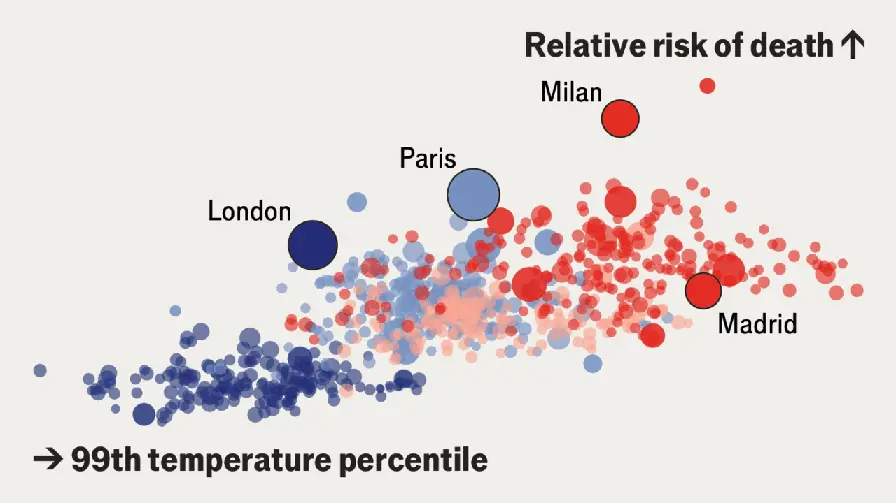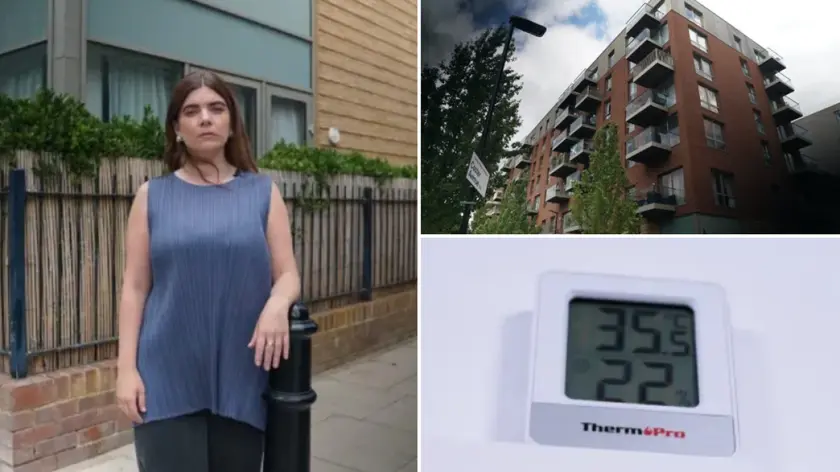T4K3.news
Heat risk rises in European cities
A new study links extreme heat to thousands of deaths across 12 European cities and calls for urgent adaptation steps.

A study links extreme heat to thousands of deaths in European cities and highlights gaps in adaptation.
Heat risk rises in European cities amid rising temperatures
An international study estimates about 2,300 deaths occurred during a ten-day heat spell that began on June 23 in 12 European cities. The researchers say climate change made the heat 1 to 4 degrees Celsius hotter, enough to explain most of the increase in deaths. Heat exposure can cause heat stroke and strain the heart while worsening chronic illnesses. A new round of alerts was issued on August 10 as heat persisted.
Despite similar peak temperatures, European cities show higher mortality risks on hot days than cities in other rich regions. For example, on days with extreme heat, Turin has higher risk than Toronto on similar hot days, according to researchers. The report also notes gaps in air conditioning, with low penetration in many countries. It points to urban heat island effects, pollution, and an aging population as key factors. It also highlights that poorer neighborhoods face higher risks due to less green space and poorer housing.
Key Takeaways
"On the hottest days, mortality rises more in Europe than in other regions"
Kai Chen, Yale School of Public Health
"Cities must make heat a planning priority or lives will pay the price"
Policy analyst
"Heat is a housing and inequality issue as well as a climate issue"
Urban health researcher
The analysis treats heat as a city health issue rather than a weather anomaly. It highlights how the urban fabric — concrete surfaces, limited shade, and dense development — can trap heat and raise death risk. That shifts the focus from climate numbers to planning choices in housing, transport, and public spaces.
A clear message emerges on equity. Aging populations and deprived neighborhoods face the steepest costs when heat spikes arrive. The data suggest modern cooling and cooling access are not optional add-ons but essential public health investments. Getting ahead now means more than weather alerts; it means building cities that stay livable when the heat comes.
Highlights
- Heat tests cities more than the weather tests people
- Cooling is a public health issue not a luxury
- Inequality burns hotter in cities with little shade
- Adaptation is a life saving choice not a policy afterthought
Budget and political implications of heat adaptation
The article points to funding needs and political will as key factors in reducing heat related deaths. Without timely investment and strong public support, vulnerable communities remain at risk.
The heat crisis is guiding a shift toward smarter, healthier cities
Enjoyed this? Let your friends know!
Related News

Europe faces record heat waves in 2025

Europe must upgrade grids to close the AC gap

City heat resilience plan

New-build homes in the UK suffer from severe overheating

Heatwaves reshape Mediterranean holidays

London heat risk prompts adaptation

Premier League season kicks off amid record spending

U.S. sees 15 billion-dollar weather disasters in early 2025
